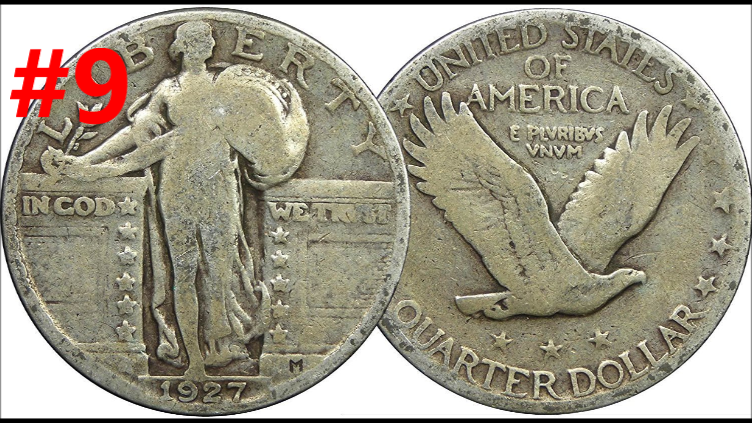

- #10 most valuable coins found in pocket change how to
- #10 most valuable coins found in pocket change series
Most of these coins will be in a 'circulated' condition (worn through years of use) and so will be valuable as bullion (precious metal) rather than as specimen coins.


The most common types of silver coin you may find are: The identical size and similar style of these coins to those used today means some find their way back into circulation. The half dollars continued to contain 40% silver until 1970. Any of these coins minted before 1964 are worth setting aside as silver bullion. Rising silver prices would result in coins being worth more than their face value, so the silver content was replaced with base metal after 1964.Īs the half dollars, quarters and dies in regular use today are the same size (although they weigh less and have different designs), it is possible that silver coins may be mixed amongst the coins circulating today. Before 1965, all half dollars, quarters and dimes were minted with 90% silver.

Silver coins are worth more than 'face value' (the amount as stated on the coin). Mis-aligned, overlaid or missing mintmarks provide a further area of interest for collectors of error coins which is worthy of further study. In the past, the mintmarks were added separately by the branch mints.
#10 most valuable coins found in pocket change series
A particularly rare coin from this mint is the 1939-D "Jefferson" Nickel: a 'key date' due to the lowest mintage in the series (3,514,000). For instance, coins marked "D" were issued by the branch mint in Denver. The mintmarksdenote the mint at which a particular coin was made. In each case, there are key rarities or varieties which command higher prices. Five Tips for Identifying Valuable United States Coins Same Coin, Different FaceĪmongst the most recognisable collectible coins that may appear in your pocket are earlier designs of familiar denominations. The US Mint provide authoritative data on the coins which they produce. Seeking an opinion from a reputable collectibles auctioneer or dealer is a sensible move. What do I do if I find a rare United States coin?įirstly, check that it is indeed genuine! Fakes do exist and even a genuine coins may have been tampered with to resemble a rarity. A basic price guide for common error coins is listed by CoinSite. Remember, a dealer will sell a coin for significantly more than they would offer you to permit themselves a profit!Įrror coins are a specific collecting category and the values of different errors are detailed in Alan Herbert's The Official Price Guide to Mint Errors. It is also beneficial to search for similar coins being sold at internet auctions, specialist auctioneers and with private dealers to gain a sense of current prices. However, Ken Potter and Brian Allen's book Strike it Rich with Pocket Change is focused upon valuable coins in circulation today rather than including historical coins too (a huge subject!). PCGS publish articles on coin collecting and also hold pricing data for graded (professionally assessed and encapsulated) coins. David Bowers, which has been published annually since 1946. The most widely used is The Official Red Book: A Guide Book of United States Coins (a.k.a. Standard reference books are an essential source for information. How do I find the value of my United States coin? These subjects will be discussed further below. A second key factor are error coins, where a standard coin has been produced with unintended variations. Those of low mintage will generally command a premium as fewer coins created leads to fewer available to collectors. those marked 'S' for the San Francisco mint) or year will vary in the numbers produced. Coins of any given denomination, mint (e.g. The mintage (number of coins produced) is a key factor in determining value. However, they are very unlikely to be from before the early 1900s! Therefore, it is always worth checking your change as there is a chance that older valuable United States coins may slip into your wallet. Two of the key changes have been the removal of precious metal content after 1964 and the introduction of smaller cent coins, which took their present dimensions in 1864. The dollar system of coinage for the United States Dollar has remained broadly unchanged since 1792: dollar ($1), half-dollar (50?), quarter (25?), dime (10?) and the cent (1?, or a 'penny'). Gain methods for assessing the rarity of coins you might find in circulationįind out how you could realise far more than face value from your change
#10 most valuable coins found in pocket change how to
Learn how to identify collectible coins that may be in your pocket


 0 kommentar(er)
0 kommentar(er)
